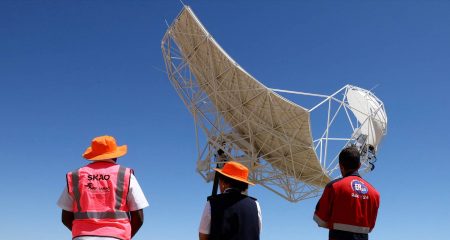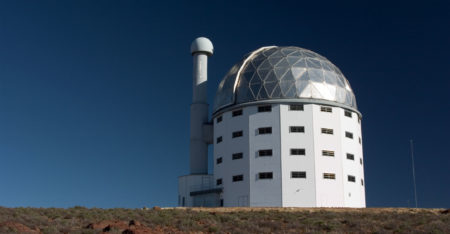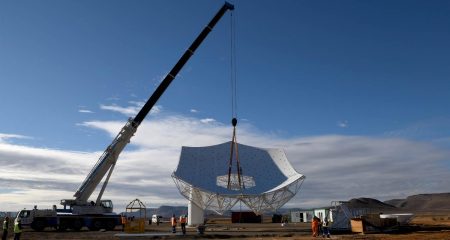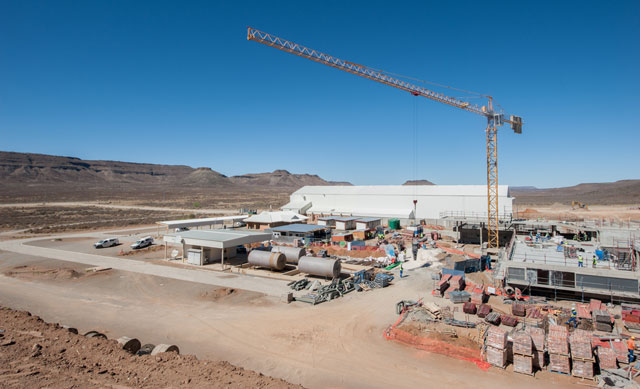
The wind picks up, blowing whorls of dust down the street. The men sitting on the side of the road avert their eyes and retreat further into the shade of the colonial-style building they are leaning against.
This was a common sight in Carnarvon in the Northern Cape in 2011, before it was announced that part of the Square Kilometre Array (SKA) — which will be the largest radio telescope in the world — would be built about 80km from the town. In 2013, it is still a common sight.
Without the large radio astronomy construction project happening in its backyard, the majority of South Africans would never have heard of Carnarvon, and its poverty, lack of services and discontent would have remained unnoticed, lost among many similar towns with similar problems.
But Carnarvon is now on the map and the locals are watching money move into the area through the SKA South Africa project — and they are getting increasingly disgruntled as it passes them by.
This week, the department of science & technology launched a knowledge centre in the local library and an e-schools initiative. Millions of rands are being invested in laptops, a mobile science laboratory, instructor training, and information and communications technology infrastructure in four schools in the area, two of which are in Carnarvon. These initiatives were funded by SKA industry partners such as Intel, IBM, Cisco, Dimension Data and Microsoft.
The deputy headmistress at Carnarvon Primary School, Vanessa Pheiffer, says: “Ninety-five percent of pupils have no access to computers.” Now, however, they will be able to use them at school.
But at an imbizo with community members on Tuesday afternoon, the questions all boiled down to one issue: why is more not being done?
Although money is flowing into the town through guesthouses that are springing up to deal with the increased demand for accommodation, these are mainly owned by the white minority in the community. None of those owners, or any white people at all, attended the imbizo.
The wind is now blowing so hard that one side of a large marquee lifts off the ground, and dust covers the hundreds of adults and schoolchildren listening to science & technology minister Derek Hanekom speak about the benefits of the SKA in general and the e-schools initiative and knowledge centre in particular.
“Citizens of Carnarvon and the surroundings benefited from the project as early as 2008 through the construction of the SKA [prototype] KAT-7, which created more than 600 jobs,” he says.
Infrastructure for the MeerKAT, the South African-built and -funded telescope that will form part of the SKA, has employed 200 locals for two years, Hanekom says.
When the floor is opened up to the community, only a few questions are taken. And they are all tinged with the same anger and disappointment.
“We hear about MeerKAT and the SKA, but look at our houses [and] why are we not getting food at a reduced rate?” one woman asks.
A man follows: “Money is coming into Carnarvon and it disappears.”
The common theme is clear: things are happening in our area and we are not benefiting — or not benefiting enough.
SKA South Africa commissioned a study by the University of Free State’s Centre for Development Support to gauge the effect that the project would have on the nearby communities should it be given the green light. Published in 2009, it found that 80% of adults in Carnarvon do not have a matric and that government grants keep the wolf from the door in many households.
Project director Bernie Fanaroff says: “The SKA is a project; it is not government.” He repeats the refrain a number of times when responding to the community’s questions.
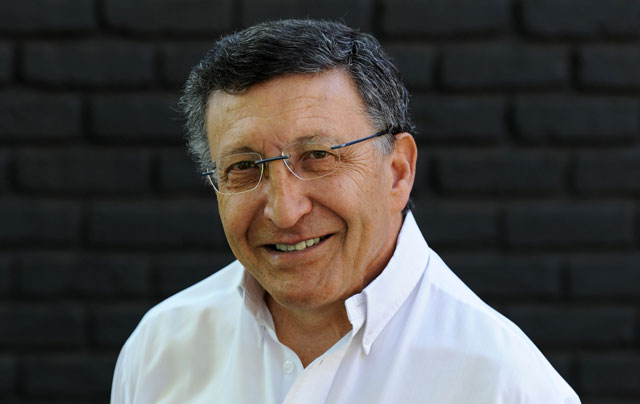
Although SKA South Africa — a scientific project tasked with overseeing the design, construction and operation of radio antennae, and creating a pool of skilled people — cannot fulfil the role of the government in the area, the people of Carnarvon are looking for any kind of lifeline to pull them out of their situation.
But there is only so much that it can do. The project is meeting its deadlines, negotiating international milestones and commitments, has disbursed hundreds of bursaries and is set to erect the first of 64 MeerKAT dishes in February.
Carnarvon schools will have some of the fastest Internet connections in the country, a mobile science laboratory and textbooks with the national curriculum available at the click of a button. In short, they will have more than most schools in South Africa, simply because they are fortunate enough to be located near the site of an international scientific project.
Fanaroff mentions that 11 people from Carnarvon have received funding to train as artisans at a further education and training college in Kimberley, and that the project hopes to send another 30 next year.
The last question to be asked at the imbizo is from a Williston resident, which — at 120km away from the SKA site — missed out on being the closest town by 40km. He takes the microphone and launches passionately into his chance to be heard: “Why don’t Williston’s people also get opportunities?” — (c) 2013 Mail & Guardian
- Sarah Wild travelled to Carnarvon as a guest of SKA South Africa
- Visit the Mail & Guardian Online, the smart news source


